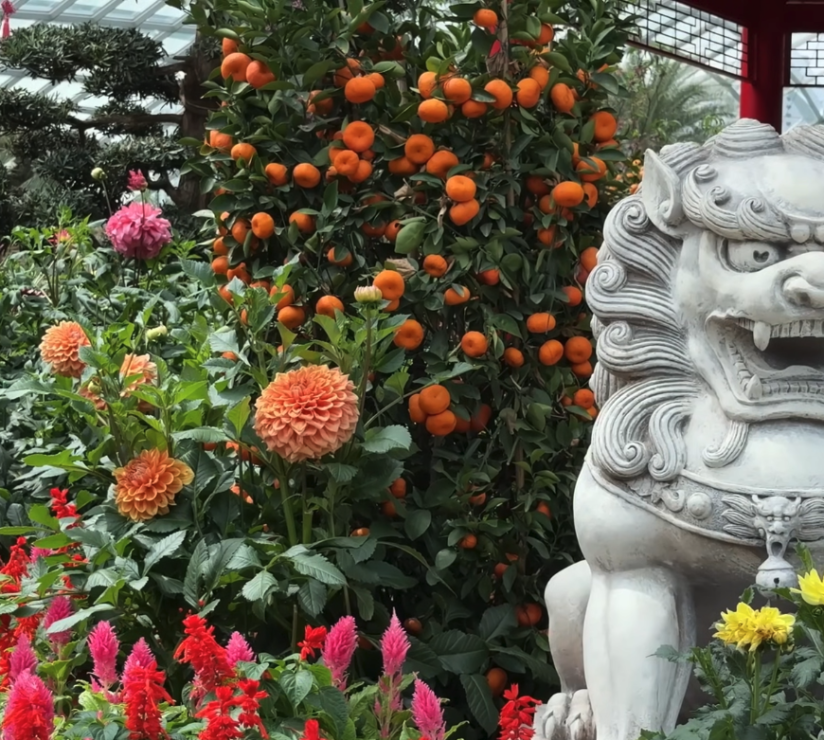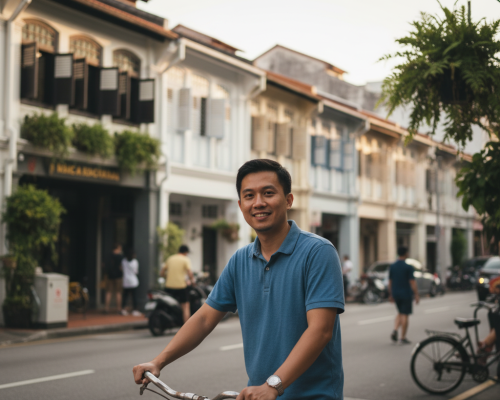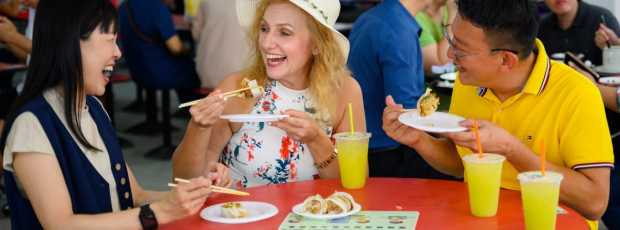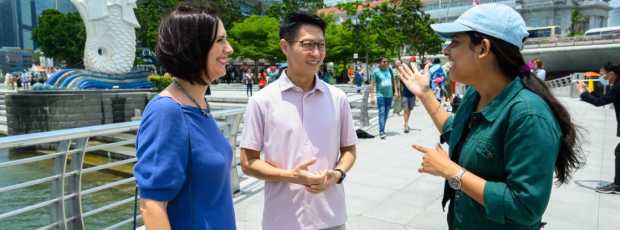ST was very knowledgeable and took us to many great places. He was great fun and very personable. We really enjoyed his tour and can’t thank him enough for showing us around Singapore.Victoria, Singapore, 2025
Table Of Contents
- You Haven’t Really Done Singapore Without Ticking These Off Your List
- Must-See Things to Do in Singapore: The Local Way
- Singapore Tourist Spots That Are Overrated
- What to Eat in Singapore and Where Locals Go
- How Locals Spend Their Free Time in Singapore: By Interest and Local Culture
- Hidden Gems and Historic Stops Worth Seeking Out
- Neighborhoods in Singapore to Explore
- Lesser-Known Neighborhoods: Stories That Still Resonate
- Practical Tips When Visiting Singapore
- Frequently Asked Questions on Things to Do in Singapore
- Why Singapore Is Best Explored With Local Insight
Blue hour over Marina Bay Sands isn’t just a beautiful sight. It’s where I first began to understand the pulse of this city. When the light softens, the city exhales, voices drop, and screens dim. It reminds me of evenings spent wandering the waterfront, with the sweet scent of satay smoke drifting from a hawker center and the cool breeze off the river. That’s when Singapore feels most alive to me, as if the city is sharing its quiet moment.
I grew up under these towers. Another block rises, and the ah pek at my kopitiam still remembers my sugar level. That’s modern Singapore. The new sits over the old, and the best parts survive in between. I keep track of the changes, and faith in the places that refuse to vanish.
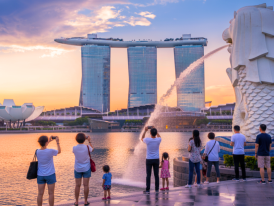
Merlion statue facing Marina Bay with Marina Bay Sands in the distance at dusk
The magic lives between the must-sees, not inside them. Street art gets the photos, but the lunch rush at Maxwell Food Center tells you more about local culture and city life. The river photographs well, yet it’s the quiet shophouses along its bend that reveal who stayed and who had to move on.
That’s how I measure Singapore experiences. Some you plan, others you stumble into. The icons matter, but the detours carry the city’s pulse. Time it right, look twice, and the city you see is the one we live in.

Bustling Maxwell Food Centre
You Haven’t Really Done Singapore Without Ticking These Off Your List
Every city has its checklist. Ours only works when you get the timing right. The same spots that feel ordinary in the heat turn magnetic when you choose the right hour. These are the moments I still walk for, even after years of the same routes.
Blue Hour Around Marina Bay
I start when the light softens, and the office windows begin to glow with the faint buzz of evening energy. The air cools, and the faint sound of boats drifting along the river mixes with the city’s hum. If you stand still for a moment, you’ll hear the quiet shift. Traffic slows, people exhale, and you finally see the city breathe.
Supertree Grove After Dark
I remember the first time I stumbled upon Supertree Grove after dark. The music, mixed with the hum of the city, made it feel almost otherworldly. I took my time standing under the trees, letting the music rise, watching the lights flicker like stars. For a moment, it felt like the world had stopped just for me. If you linger, you’ll feel the place shift from a touristy spot to something deeper, almost magical. If you want Singapore at night without the chaos, stand under the trees and let the music build.
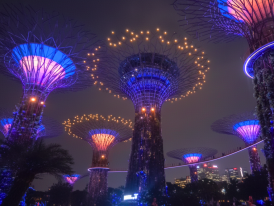
Glowing Supertree Grove canopy at night
Dawn at Singapore Botanic Gardens
At first light, the paths belong to joggers, tai chi aunties, and the smell of wet grass. I walk slowly through the shade, passing families by the lake. The calm before the city wakes is worth more than any ticket. Decide later if the National Orchid Garden waits or deserves the morning now. Both choices feel right here.
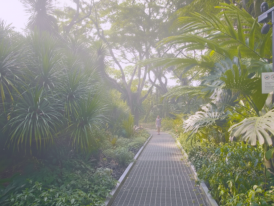
Misty morning path in Singapore Botanic Gardens
A Peak-Hour Hawker Table
If you only try one local ritual, make it this. I love the rhythm of Maxwell Food Center at lunch. The moment I walk in, there’s a buzz of voices, the sizzle of woks, and the smell of soy sauce and garlic filling the air. I usually head to the chicken rice stall that’s always busy. The aunty there doesn’t need to ask for my order. She knows exactly how much dark soy sauce I want. Sitting down at a shared table, I always feel like I’m a part of something bigger than just eating. It’s a little ritual, a quick break from the world.
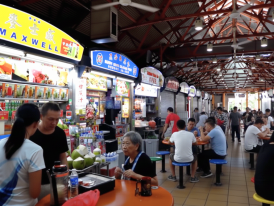
Busy lunch crowd at Maxwell Food Centre
One Slow Wing at National Gallery Singapore
I like to walk one wing at a time. The National Gallery Singapore, set in the former Supreme Court and City Hall, carries more stories than its labels can hold. When timing lines up, I join a free walking tour and listen to how artists turned Southeast Asia’s upheavals into color. The building whispers history in marble and light.
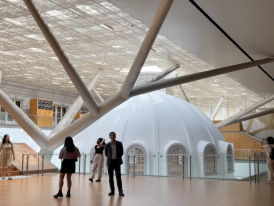
Visitors beneath the glass roof at the National Gallery Singapore
A Few Stops Past the Icons
When the crowds tighten downtown, I ride the MRT to Toa Payoh. The Dragon Playground still wears the polish of decades of play, and Kim Keat Hokkien Mee (金吉福建面) nearby delivers wok hei that tastes like memory. This mix of laughter, smoke, and neighborhood pace is where everyday Singapore breathes easiest.
Because No Two Travelers Are the Same
We help you shape a city day that matches your pace, your style, and your curiosity, not a fixed route.
Must-See Things to Do in Singapore: The Local Way
Timing changes everything. Hit the icons at the right hour and they feel human again. These are the big names I still visit, with the angles I use when I go with friends or slip out alone after work.
Marina Bay Sands and the Marina Bay Waterfront
I walk the full loop, not one viewpoint. About an hour before sunset, the light turns soft and the groups thin. If you want a rooftop bar toast, go early on weekdays. Friday and Saturday nights are pricier and slower. I sometimes start at Raffles Hotel, skip the Singapore Sling, and follow the Singapore River past shophouses that outlived redevelopment. Families and elders like it here because Bayfront MRT sits under the hotel, and the promenade is flat.
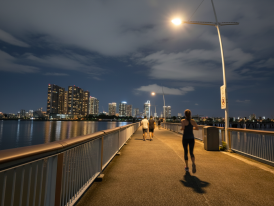
Marina Bay skyline from the waterfront loop at dusk
Gardens by the Bay: Cloud Forest, Flower Dome, and Supertree Grove
I love taking my friends to Cloud Forest when the day turns heavy. The cool mist hits and the city noise falls away. After that reset, everything feels lighter. Flower Dome rotates seasonal shows that keep kids and older knees happy without the heat. For Supertree Grove, I stand slightly off-center and catch Garden Rhapsody at 7:45 PM or 8:45 PM. I book the conservatories during school holidays, then wander the free outdoor gardens where paths are flat and step-free access keeps it simple. On humid afternoons, I dip back into Cloud Forest for one more quiet loop, then walk out as the sky changes over the bay.

Supertree Grove glowing above the crowd at night
Singapore Botanic Gardens and National Orchid Garden
Go early. The Singapore Botanic Gardens is a UNESCO World Heritage Site and the only tropical garden on the list. Between 7:00 AM and 9:00 AM, it feels local and calm. I walk the Rain Forest loop, then the water by Swan Lake, where dragonflies skim the surface. When I bring friends, I save an hour for the National Orchid Garden and let them pick a favorite bloom before we find shade under heritage trees. Flat, well-marked paths and plenty of benches keep the pace easy, and a coffee by Symphony Lake is my cue to head back into the city.
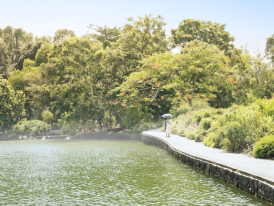
Morning path by the lake at Singapore Botanic Gardens
National Gallery Singapore: Modern Southeast Asian Art
I come for the buildings and stay for the art. The former Supreme Court and City Hall hold the world’s largest collection of modern Southeast Asian art. If timing lines up, I join a free walking tour, then sit under the glass link to let it settle. Lifts and ramps help on tired-leg days, and it’s a short stroll back to the water for fresh air along the river bend.

Glass canopy linking the Supreme Court and City Hall wings
National Museum of Singapore: Singapore’s History
If you want the city to make sense before the photos, start at the Singapore National Museum. The Singapore History Gallery runs from trading post to independence to now at a calm pace. I give it two hours, cool down in the air conditioning, then walk to lunch. Clear wayfinding, step-free access, and plenty of seating make it an easy midday pivot.
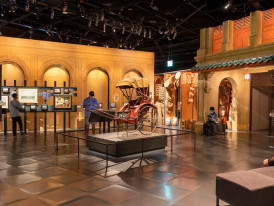
Visitors moving through the Singapore History Gallery
Singapore Is More Than Its Checklists
Step into tucked-away places and everyday stories you won’t find on maps.
Buddha Tooth Relic Temple (佛牙寺龙华院): A Living Place of Worship
Weekday mornings here feel quiet and steady. Incense hangs in the air, chanting carries, volunteers move through their routines. I keep my shoulders and knees covered and put the camera away during active worship. It reads as a working temple, not a backdrop.
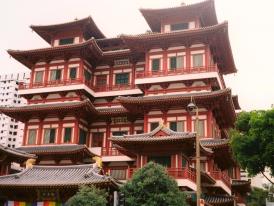
Red and gold facade of Buddha Tooth Relic Temple on South Bridge Road
Thian Hock Keng Temple (天福宫): A Quiet Pause
When I need to think, I slip into the side courtyard before or after meetings on Telok Ayer. Built in 1842 with traditional joinery, it has the calm of a room that remembers. Ten minutes under the eaves resets a busy day, and I leave lighter for my next stop.
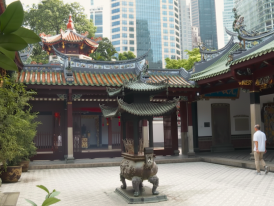
Green and orange tiled roof of Thian Hock Keng Temple
Little India: Color, Temples, and Street Art
Follow Tamil pop toward Tekka Center and the spice stalls. Sri Veeramakaliamman Temple (ஸ்ரீ வீரமகாளியம்மன் கோவில்) anchors the spiritual pulse, and the back-lane murals feel lived, not staged. I bring friends in the evening for energy or go alone in the morning for a slow market lap and coffee.

Gopuram of Sri Veeramakaliamman Temple over Serangoon Road
Sentosa: Universal Studios Singapore for Theme Park Breaks
When museums blur, a theme park reset helps. Families with kids often split their time between Sentosa and the Singapore Zoo, so the day stays fun instead of forced. Universal Studios Singapore covers the rides, the beaches, and the breeze does the rest. I mix two rides with a pause by the water, then head back to town for cool air and dinner. Weekdays beat weekends for queues. Sentosa works as one of those easy day trips from Singapore when you just need sun, rides, and a sea breeze before heading back to town.
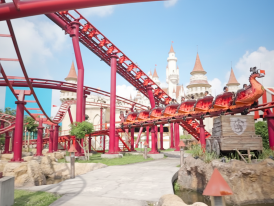
Red roller coaster cars at Universal Studios Singapore
Amoy Street Food Center: Office-Hour Hawker Rhythm
When friends ask for a fast, real lunch, I bring them here. I chose a table, aimed for the quickest moving line, and watched the office crowd keep the pace honest. Stalls turn over fast at noon, so the food stays fresh and the queues teach you what is worth it. Cash is still handy even if some sellers take cards. We split plates, compare sauces, and argue over which stall nailed the wok hei.
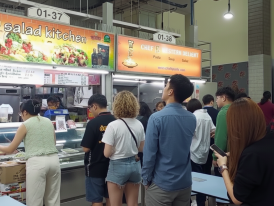
Busy lunch queues at Amoy Street Food Centre
Keep the spirit, adjust the plan, and you get the city back.
Singapore Tourist Spots That Are Overrated
Some ideas look better on a brochure than on the ground. Crowds, pricing, and bottlenecks can drain a day if you don’t time them right. Keep the spirit, adjust the plan, and you get the city back.
Waterfront at Sunset? Go at Dawn Instead
I still love the bay, I just change the hour. Sunset along Marina Bay pulls in every tour group in the region, the Merlion zone clogs, and you end up fighting for space instead of enjoying the view. Go in the morning between 7:00 AM and 8:30 AM for soft light, quiet paths, and room to look up at the skyline. I start near the Fullerton side, circle the Marina Bay area, then follow the bend of the Singapore River before the heat builds. You also save money by skipping the drink you didn’t need just to claim a vantage point.

Early morning calm at Marina Bay, soft light over the river
Skyline Views Without the Weekend Tax
I like a skyline toast as much as anyone, but I just keep it short. A rooftop bar is fine for one round, not a whole night. If you want the view at Marina Bay Sands, go midweek or just before sunset, enjoy the glass, then move on. Prices spike hardest on Friday and Saturday nights, lifts crawl, and the noise rises with the bill. I take the photo, finish up, and drift to cool bars along Club Street, where the conversation carries and the tab stays human.
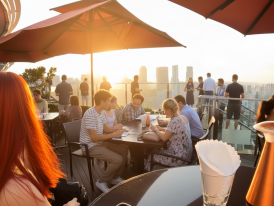
Marina Bay Sands rooftop bar with a sunset view
Real Street Art Beats Set Pieces
If a wall looks staged, it probably is. Influencer corners multiply faster than real culture, so I keep the art and change the street. If you want cool street art that actually lives in the neighborhood, skip the staged walls and head for working lanes where people shop and eat. A back-alley mural near a market tells you more than any neon slogan. Street art in Little India or Arab Street feels more authentic. Early evening has the best rhythm. Ask before photographing people, keep doorways clear, and let the neighborhood speak in its own voice.

Local street art on a wall. Mural by Zero RSCLS
Hungry to Taste Singapore Like a Local?
From tucked-away eateries to lively markets, discover flavors worth your time.
What to Eat in Singapore and Where Locals Go
Our reputation rests on hawker centers and street food, but it’s how we navigate them that makes the difference. We eat differently from visitors, and following our lead unlocks better meals at prices that make sense. If you are trying to figure out what to eat in Singapore, this is how locals pick their stalls and decide what is worth the line.
How Hawker Centers Work
Hawker centers have unwritten rules that may confuse first-timers, but they make sense once you get the rhythm. Find a table first during peak hours, “chope” it with bags or tissues, which is a Singaporean custom. Order from multiple stalls, pay individually, and keep your table number if the stall delivers.
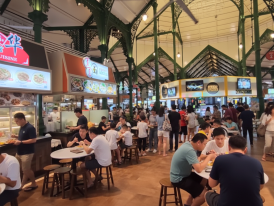
Busy hawker stalls with people ordering lunch at a food center
Food courts in malls are pricier and often serve toned-down versions of local classics. Authentic hawker stalls use family recipes, cook to order, and charge prices locals can afford. The best ones have queues of office workers at lunch and neighborhood aunties at off-peak times. Pick the fastest-moving line and follow the rhythm. Go early, bring cash, and sit near a fan.
Street Food Classics That Food Lovers Need to Try
Chili Crab: The Signature Dish, Done Right
Chili crab is an iconic dish in Singapore, but it’s not something we usually order at tourist spots that overcharge for it. Newton Food Center is a good introduction, but personally, I’ll pick zi char at neighborhood centers for a more authentic experience, where the flavors are bold, and the prices make sense.

Spicy chili crab with crackers
Chicken Rice: Simple, But With Skill
The chicken rice here? Shiok, lah! It hits the spot every time. The stall I always return to is at Tiong Bahru Market, where the aunty’s recipe has been perfected over decades. Her chili sauce has just the right kick to balance the richness of the chicken. It’s the balance of chicken fat and stock that you won’t find anywhere else. Every bite is ‘bao ga la’, packed with flavor and satisfaction. The first time I tried it, I didn’t expect much. It’s just chicken rice, after all. But as I took the first bite, something clicked. The richness of the chicken, combined with the tangy heat of the sauce, made it unlike any I’d had before. Now, whenever I visit, it feels like going home. The aunty doesn’t need to ask my order anymore. She knows exactly how much dark soy sauce I want. It’s become a little ritual, one that I look forward to every time.
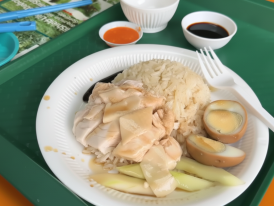
Delicious plate of chicken rice served with dark soy sauce
Laksa and Bak Kut Teh: Try the Local Comfort Foods
Laksa is a must-try, but there are different versions to explore. I always head to Sungei Road Laksa for that smoky charcoal heat that adds depth to the soup. The wok hei is so strong you can taste it in every spoonful. It’s ‘shiok’ (delicious) every time. Bak kut teh, a peppery pork rib soup, is another dish I turn to for comfort. The broth is clear but full of flavor, and the lean ribs are perfect for dipping into youtiao (fried dough). These local dishes are the ones people in Singapore crave, and they’ll give you a true taste of the city.
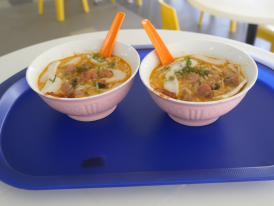
A steaming bowl of laksa with cockles
Secret Local Eats You Won’t Find on a Tourist Map
These are the places I send friends when they ask where to eat. They run on regulars, not marketing. Expect small menus, short hours, and queues that move because the aunties and uncles don’t waste time. Go early, bring cash, and watch what locals order. If you want to truly taste Singapore, this list is where you’ll find the soul of our food scene.
Lam Yeo Coffee Powder Factory: Old-School Beans Ground to Order
Lam Yeo Coffee Powder Factory is one of those spots where you get the feeling time has slowed down. I’ll grab a small bag of their Moka blend, ask for a medium grind, and stand outside, letting the roasted aroma hang in the air. It’s not about trendy cafes here. It’s about old-school coffee for heartland regulars.

A bag of freshly ground coffee and beans at Lam Yeo Coffee Factory
Heap Seng Leong Coffeeshop (协胜隆咖啡店): Kopi Gu You and Kaya Toast
Heap Seng Leong is a place that feels like it’s stuck in time, and I’m okay with that. I always order kopi gu you, sit by the fridge that hums softly, and watch the butter melt into the coffee. It’s as much a moment as it is a meal. Pair it with kaya toast, and you’re set for the morning.
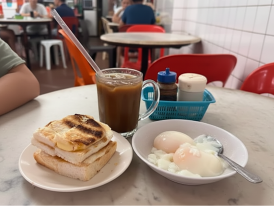
Classic kaya toast and kopi gu you served at Heap Seng Leong
Sungei Road Laksa (结霜桥叻沙): Charcoal-Heated Laksa
People talk about laksa, but this one is different. At Sungei Road Laksa, it’s all about the charcoal heat, which adds this smoky depth to the soup. You’ve got to get there before noon, because the line moves fast and the place closes early. I always order two bowls. I mean, you can never have enough laksa, right?
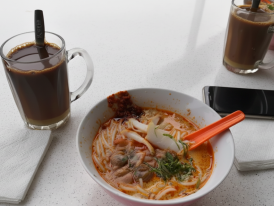
A steaming bowl of laksa with cockles
Rong Cheng Bak Kut Teh (榕城肉骨茶): Teochew-Style Bak Kut Teh
When I want bak kut teh that feels like comfort, I head to Rong Cheng Bak Kut Teh. The broth is a peppery, clear wonder, and the lean ribs are perfect with a side of youtiao for dipping. I’ve been going here for years, and the uncle serving it up knows exactly how much pepper I like, just a little extra when he thinks I’m not looking.
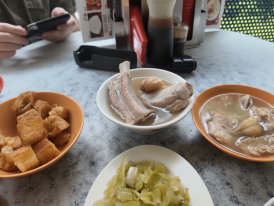
A bowl of peppery bak kut teh with fried dough on the side
Beach Road Scissors Cut Curry Rice (美芝律剪刀剪咖喱饭): Late-Night Curry Rice
The scissors choreography at Beach Road Scissors Cut Curry Rice is something you won’t forget. It’s messy in the best way, but don’t let that stop you. I always go for pork chop, cabbage, and egg, all drenched in gravy. It’s simple, satisfying, and so much better than the touristy spots around the corner.

Curry rice being prepared with scissors at Beach Road
Haig Road Putu Piring: Steamed Coconut Cakes
There’s nothing quite like eating a putu piring fresh off the steamer at Haig Road. The gula melaka oozes out when you take a bite, and if you're lucky, you'll get an extra one right from the batch. I’ve never been able to stop at just one. There’s always that moment when I try to save the rest, but it’s impossible.

Freshly steamed putu piring with gula melaka
Too Many Lists, Not Enough Clarity?
We make exploring simple by connecting you with someone who knows the city and helps you spend your time on what matters to you.
See how it worksHow Locals Spend Their Free Time in Singapore: By Interest and Local Culture
Local leisure revolves around community spaces and shared activities that tourists rarely notice. Understanding these rhythms reveals the social fabric beneath our efficient planning. If you crave people-watching, start here.
Art and Culture: A Deep Dive
If you're looking to explore Singapore’s culture beyond the streets, National Gallery Singapore is a must-see. Located in the former Supreme Court and City Hall, it holds the world's largest collection of modern Southeast Asian art. I enjoy wandering from the old courtrooms into the sleek glass-roofed link, taking time to stop and observe each piece. It’s not a rush-through museum. It’s also worth joining a free walking tour if the timing lines up. I’ve spent hours there, and still feel like I’ve only scratched the surface.
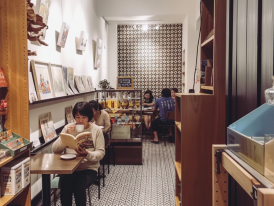
Drinking coffee and reading a book at Grassroots Book Room
For a more balanced experience, I recommend Gillman Barracks, which houses contemporary galleries with room to breathe. If you're into books, don’t miss Grassroots Book Room on Bukit Pasoh. It’s cozy, a perfect place to unwind while exploring regional literature.
Outdoor Pursuits: Finding Calm in the City
We don’t just live in the city. We find ways to escape it, too. There are green spaces, quiet paths, and outdoor activities that help us stay connected to nature.
The Park Connector Network is one of my favorite ways to get out of the noise. I grab my bike and head from East Coast Park to Marina Barrage, where the quiet paths let me escape the city’s fast pace. These routes link neighborhoods to nature parks and coasts, offering a simple and hassle-free way to reconnect with the outdoors. When I’m not cycling, I walk along the quieter parts of East Coast Park, watching families and joggers, or grabbing a coffee from a nearby stall.
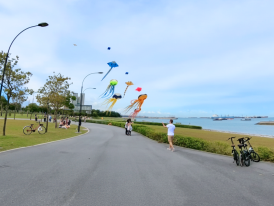
Peaceful cycling route along the Park Connector Network
In the evenings, dragon boating at Kallang Basin brings community teams, schools, and colleagues together on the water. It’s a great way to reset after a long day. The camaraderie and team spirit here are unique. It’s not just about competition. Similarly, kite flying at Marina Barrage is a simple pleasure. Families gather to enjoy the breeze, and kids run with their kites in the open space.
Connecting Through Gardens and Community Spaces
Locals also find connection in everyday spaces like community gardens. Tucked beneath HDB blocks or on rooftops, these gardens are where we grow herbs, vegetables, and bond with neighbors. I often stop by these spaces and chat with people tending to their plants. It’s a side of Singapore that most visitors miss, but it’s vital to our culture. These gardens provide a peaceful retreat in the middle of the city, where neighbors come together over shared interests.
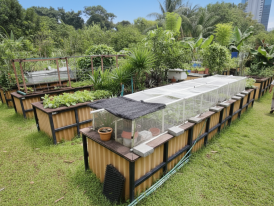
Community garden tucked under HDB flats
Similarly, void decks underneath HDB flats are where life happens. From weddings to wakes, these spaces host life’s big moments, but they also provide a place to sit down, talk, and relax. The open design creates a strong sense of community. It’s where we meet up after work, where we share meals, and where we connect with others.
Finding Peace and Quiet
If you need a break from the rush, there are places in Singapore that offer a peaceful retreat. I love heading to Bedok Jetty on Sunday mornings before sunrise. The fishing crowds are already there, folding chairs and tackle boxes ready. It’s not just about catching fish. It’s about the calm of watching the sun rise over the sea, listening to the waves, and soaking in the silence.

Henderson Waves Bridge with views of the city skyline
Similarly, if you're looking for something more peaceful but still connected to the outdoors, I recommend the Southern Ridges. The elevated walkways and the iconic Henderson Waves Bridge offer incredible views of the city, and the peace you find there is a welcome break from the fast-paced life downtown. It’s the perfect way to connect with nature without leaving the city.
Build Your Day
City Unscripted matches you with a local who plans around you in real time, so you skip lines, find real spots, and keep the day flexible.Hidden Gems and Historic Stops Worth Seeking Out
Some days, I skip the big-ticket sights and go searching for Singapore’s past in quieter corners. These places are the hidden gems in Singapore, the ones I send to friends who want depth without crowds.
Reflections at Bukit Chandu
The first time I visited Reflections at Bukit Chandu, I was struck by how quiet it was. Standing in the black-and-white bungalow, you almost feel the presence of the past. I remember walking around the exhibits, feeling the weight of history in the air, and then standing outside to breathe in the calm of Pasir Panjang Ridge. It’s a place where time feels like it slows down, and the bravery of those who fought for Singapore echoes.
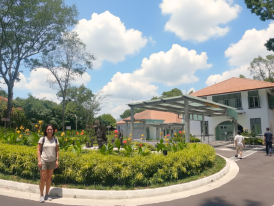
Quiet exterior of Reflections at Bukit Chandu, black-and-white bungalow
Former Ford Factory
The Former Ford Factory, a National Archives of Singapore museum, is where British forces surrendered to the Japanese in 1942. It’s a sobering place, full of history. The Art Deco building holds one of the most thought-provoking exhibits in Singapore, taking you away from the downtown gloss and straight into the heart of our war history. It’s quiet, reflective, and worth every minute spent there.
Changi Chapel and Museum
Changi Chapel and Museum stands as a tribute to the POWs and civilian internees held during World War II. The museum is anchored by a simple open-air chapel, offering a space for reflection. It’s open Tuesday to Sunday, from 9:30 AM to 5:30 PM, and I find a late-afternoon visit especially quiet and peaceful. The understated presentation of history here draws you into the deeper stories of those who endured unimaginable hardships. I often pause in the chapel, soaking in the stillness and history.
Thow Kwang Pottery Jungle and Dragon Kiln
If you’ve ever been fascinated by ancient crafts, Thow Kwang Pottery Jungle is a hidden gem. A family-run business since the 1960s, it houses one of the last remaining wood-fired dragon kilns in Singapore. When the kiln fires, you feel how the ancient craft still lives on in the modern world. Workshops are held on-site, and if you’re lucky enough to see one in action, you’ll witness firsthand how art and history intertwine. It’s a rare glimpse into a fading tradition.
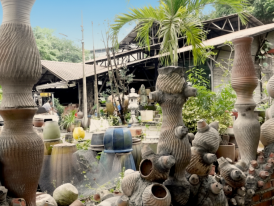
Thow Kwang Pottery Jungle
Goodman Arts Center
For something a little less polished but equally captivating, Goodman Arts Center in Mountbatten is worth a visit. The studios and small performance spaces here feel more like a neighborhood hangout than a formal art space. I love the laid-back vibe, especially during open houses where you can meet the artists and see their work up close, no velvet ropes or pretension. I’ve spent many afternoons here, always discovering something new and exciting.
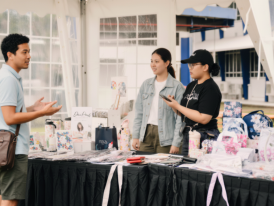
Local artist studio at Goodman Arts Center with open house event
Beyond the Checklist
Discover the city guidebooks don’t cover with a local by your side.
Neighborhoods in Singapore to Explore
Across Singapore, neighborhoods have developed distinct characters despite urban planning pressures. Walking these areas gives you a feel for Singapore neighborhoods and how people actually live behind the skyline. It’s the quieter corners of Singapore that offer you a deeper, more authentic experience of local life.
Chinatown: More Than Just Tourist Shops
Chinatown isn’t just about the souvenir shops. The Kreta Ayer Heritage Gallery may be small, but it tells the story of Chinatown’s intangible culture, showcasing opera costumes, nanyin instruments, and tea tools that have survived generations of redevelopment. The Buddha Tooth Relic Temple isn’t just for photos either. It’s a place of worship. You’ll witness morning chanting and evening prayers, with or without a camera. To experience Chinatown like a local, head to Chinatown Complex, a hawker center where residents gather daily, not just for the weekend crowd.
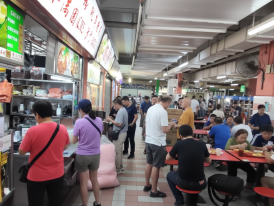
Chinatown Complex with bustling hawker stalls
Kampong Glam: A Blend of Heritage and Contemporary Muslim Culture
Kampong Glam blends heritage and modern culture. Arab Street is the heart of Singapore’s Muslim quarter, lined with textile shops, perfumes, and halal food that cater to both Malay and Indonesian communities. At Sultan Mosque, respectful non-Muslim visitors are welcome, but remember to cover your shoulders and knees. The area has a deep tradition, but it’s also home to Haji Lane, where contemporary fashion and café culture thrive. This mix of faith, trade, and design is a true reflection of Singapore’s multicultural soul.
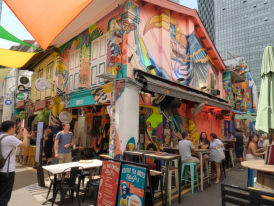
Colorful shopfronts along Haji Lane with cafes and street art
Joo Chiat and Katong: Hidden Gems Off the Beaten Path
When I first wandered through Joo Chiat and Katong, I felt like I had stepped into a time capsule. The streets are lined with colorful shophouses, and I remember stumbling upon The Intan by chance. It was a quiet afternoon, and the owner gave me a personal tour of the house, telling stories that had been passed down for generations. The heirlooms on display weren’t just artifacts. They were pieces of living history that spoke to the soul of Singapore.
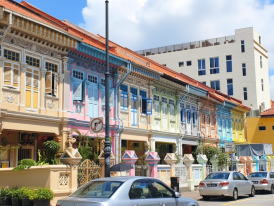
Traditional Peranakan house with colorful doors and decor
Toa Payoh: Heartland Life and the Dragon Playground
Toa Payoh offers a glimpse into heartland life. The Dragon Playground, designed in the 1970s by Khor Ean Ghee, is a beloved local landmark. It’s a meeting spot for the community, as much a playground for kids as it is a photo stop for tourists. Nearby, Kim Keat Hokkien Mee serves up noodles with wok hei that speaks to years of perfected skill. Toa Payoh’s HDB estates are a model for community living, with void decks, coffee shops, and communal spaces that make dense living feel social and vibrant.
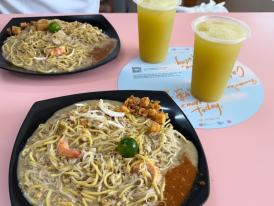
People enjoying local Hokkien mee at a heartland hawker center
Curious What You Won’t Find Online in Singapore?
Discover the side only locals talk about.
Lesser-Known Neighborhoods: Stories That Still Resonate
If you want to see parts of Singapore that most visitors miss, these lesser-known neighborhoods are where you’ll find deeper stories.
Japanese Cemetery Park in Hougang
The Japanese Cemetery Park in Hougang is a peaceful spot that reflects Singapore’s migrant history. The bougainvillea arches give it a quiet, almost poetic atmosphere. It’s open early until dusk and offers a tranquil space for reflection.
Beaulieu House in Sembawang Park
Beaulieu House, located in Sembawang Park, is a 1910s seaside home transformed into a laid-back restaurant with views of the strait. It’s a hidden gem up north that most tourists overlook, offering a peaceful escape with a historical twist.
Kampong Lorong Buangkok
Kampong Lorong Buangkok is Singapore’s last mainland village, a private space still home to residents. If you visit, be respectful as you would when entering someone’s front yard. This quiet, preserved area offers a glimpse into Singapore’s past, far from the city’s modern developments.
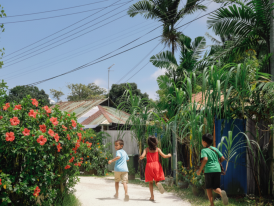
Rustic wooden homes in Kampong Lorong Buangkok with lush greenery
Practical Tips When Visiting Singapore
I keep city days smooth with a few habits. Tap in on trains, carry a little cash for hawker stalls, dress modestly at temples, and plan for heat with short rain bursts. Here is the quick kit I give friends.
Transport Options That Work Best
- The Mass Rapid Transit (MRT) and buses use a simple tap-in system.
- Contactless bank cards work via SimplyGo, so you do not need a separate card if you carry a Visa or Mastercard.
- The Google Maps app gives reliable routing for trains, buses, walking, and cycling.
- Bayfront MRT sits under Marina Bay Sands and links lines, handy for Gardens by the Bay and the waterfront loop.
- Most stations are step-free with lifts and clear signage. Priority seats are for seniors, pregnant passengers, and people with mobility needs.
Money and Basic Etiquette
- Credit cards and mobile payments work almost everywhere. Some hawker stalls and older shops still prefer cash.
- Tap water is safe to drink. Bring a bottle and refill.
- Dress modestly at religious sites. Cover shoulders and knees, remove shoes if requested, and avoid photos during active worship.
- Return your tray at hawker centers and queue neatly. Offer your seat to someone who needs it more.

Hawker stall accepting cash and mobile
Airport Connections and Arrival Logistics
- Changi Airport connects to the city by MRT or taxi. The ride is about 30 minutes, traffic allowing.
- If you land early, Jewel Changi Airport is an easy place to walk and eat. The Rain Vortex light and music shows help reset a tired body clock.
- Public drinking is restricted by time and zone under liquor rules. Evenings are simplest in bars, restaurants, hawker centers, and licensed venues.
General Travel Tips
- Keep plans light so you can pivot around the weather. Late afternoon showers are common.
- Go early for popular sights and meals. Lines shorten after the office lunch rush.
- Wear light fabrics, sunscreen, and comfortable shoes. Air-conditioning can be strong, so a light layer helps.
- Move with the crowds when it helps, then step sideways when it does not.
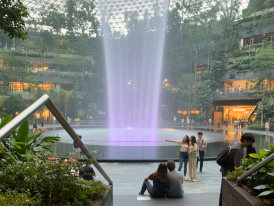
Jewel Changi Airport's waterfall
Frequently Asked Questions on Things to Do in Singapore
1) Is Singapore expensive for tourists?
Costs vary. Hawker centers offer meals around S$3–S$6. Hotels and fine dining can be pricey. Plan a mix.
2) What is the best time to visit, weather-wise?
Hot and humid year-round with afternoon showers. Mornings and evenings are most comfortable.
3) How many days are enough to see the city?
Three to four days cover the big sights. A week allows neighborhood time and slower exploring.
4) Is Singapore safe for solo travelers?
Yes. It ranks among the world’s safest cities. Normal common sense still applies.
5) Do you need to tip in Singapore?
No. A service charge is usually included. Rounding up is optional.
6) Can you drink alcohol in public at night?
Public drinking is restricted late at night except in licensed venues. Bars, restaurants, hawker centers, and other licensed spots are the simplest choices.
7) Can you drink the tap water?
Yes. Tap water meets international safety standards.
8) What is the easiest way from Changi Airport to the city?
MRT is the lowest cost. Taxi or ride-hail is the fastest. Taxi time is about 30 minutes, traffic allowing.
9) Do credit cards and mobile payments work at hawker stalls?
Often yes, though some stalls prefer cash. Carry a small amount of cash for backup.
10) How do hawker centers work for first-timers?
Find a table first. “Chope” it with a small item if needed. Order at each stall, pay there, and note your table number if they deliver.
11) What foods are must-tries?
Chicken rice, laksa, and chili crab. For everyday flavors, bak kut teh and kaya toast.
12) Are Marina Bay Sands and Gardens by the Bay worth it?
Yes, with smart timing. Go early for Marina Bay views. Catch the Supertree Grove light shows at 7:45 PM and 8:45 PM.
13) Why is the Singapore Botanic Gardens significant?
It is the only tropical garden on the UNESCO World Heritage Site list. It includes the National Orchid Garden.
14) Where can modern Southeast Asian art be seen?
National Gallery Singapore holds the largest public collection focused on Singapore and Southeast Asia in the former Supreme Court and City Hall.
15) Which neighborhoods are best for a first visit?
Chinatown, Little India, and Kampong Glam. Temples, markets, street art, and everyday life within easy walking areas.
Why Singapore Is Best Explored With Local Insight
Blue hour at Marina Bay, then ten quiet minutes at a hawker table. Let strangers slide you space, listen to cleavers and gossip, feel the city breathe. That is the difference between seeing Singapore and meeting it.
Choose less, notice more. Walk one wing at the National Gallery Singapore, then a kopitiam where the aunty still remembers your kopi. Drift past Supertree Grove after dark, then a void deck where a birthday and a wake share the night. The map shrinks, the stories get larger.

Visitors at Thow Kwang Pottery Jungle
If you keep one rule, make it this. Walk early, sit often, speak to the person serving you, and leave room for detours. In Singapore, the real magic doesn’t lie in ticking off boxes on a to-do list. It’s in taking the time to breathe in the sounds of the hawker centers, noticing the warmth of the street art on Little India’s walls, and pausing to chat with the stall owner who remembers how you like your kopi. Slow down, and let Singapore reveal itself at your pace. Only then will you truly understand the pulse of this city.
Keep Exploring Singapore
Ready to Plan Your Perfect Day in Singapore?
Start your experienceWhat If Your Day in Singapore Was Planned by Someone Who Knows It — and You?
City Unscripted matches you with a local host who creates a private experience based on your interests, not a set route.
Explore With UsWish You Had a Local Friend in Singapore?
A fully private experience, planned and led by a local host who tailors the day to you
